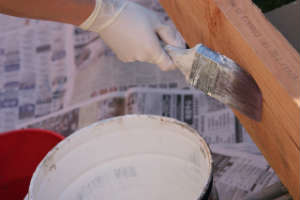Because of stucco’s non-absorbent surface, when mold grows on stucco it will generally grow directly on the surface. There must be two important factors involved for the mold to be able to grow, these are water, and organic materials, which feed the mold. These materials can be anything that is organic and from the earth, including dirt, grass or other plant life. When humidity is high, water will almost certainly remain on a stucco wall, creating the perfect hospitable environment for mold to grow. To find out more about stucco in general go here.
Mold On Stucco- How Can I Stop Stop The Mold?
If you wish to prevent your stucco from growing mold, be sure to maintain a clean wall. Make it a part of your weekly maintenance to hose off any dirt, mud or grass that collects on the wall. If there are no nutrients available for mold to feed on, it will be unable to grow. It is also important to try to maintain dry stucco to prevent mold growth. If you live in a humid climate, purchase a dehumidifier and use it on a regular basis to dry your stucco wall. Additionally, you can paint your stucco with a mildewcidal paint to keep moisture from penetrating the wall. You can purchase mildewcidal paint at Home Depot and even on Amazon.
In more serious cases, the plaster of your stucco wall can be compromised by larger amounts of water and humidity. These serious cases can cause major, permanent damage to your stucco. For example, flooding can lead to large amounts of ground water and dirt penetrating the bottom of your wall, causing the perfect opportunity for mold to grow inside of your stucco wall. To prevent serious cases like this, be sure that you install proper drainage outside of your home. Roof leaks or roofs lacking roofing paper can cause similar cases on the upper part of your stucco wall.
How Do I Remove Mold?
To remove mold from your stucco surface, mix 5 parts water to 1 part bleach and spray it directly on the moldy part of your stucco wall. Scrub the area with a sponge and rinse the bleach with a hose. Be sure to wear gloves when mixing and spraying bleach to protect your skin from dangerous and painful chemical burns.
If your mold problem is more severe, such as in cases where water has penetrated your stucco wall and mold is growing on the inside, you will need to remove and replace the infected stucco. In order to do this, you will need to rent or purchase a circular saw and remove the sections of stucco that are moldy. You will also have to remove the building paper behind the stucco before replacing it. Use a stucco patch liquid or commercial stucco mix to fill the area you have removed. Typically a job like this is no small feat, and can be better off in the hands of a professional. To repair your stucco surface with a serious mold problem, contact a mold remediator.



